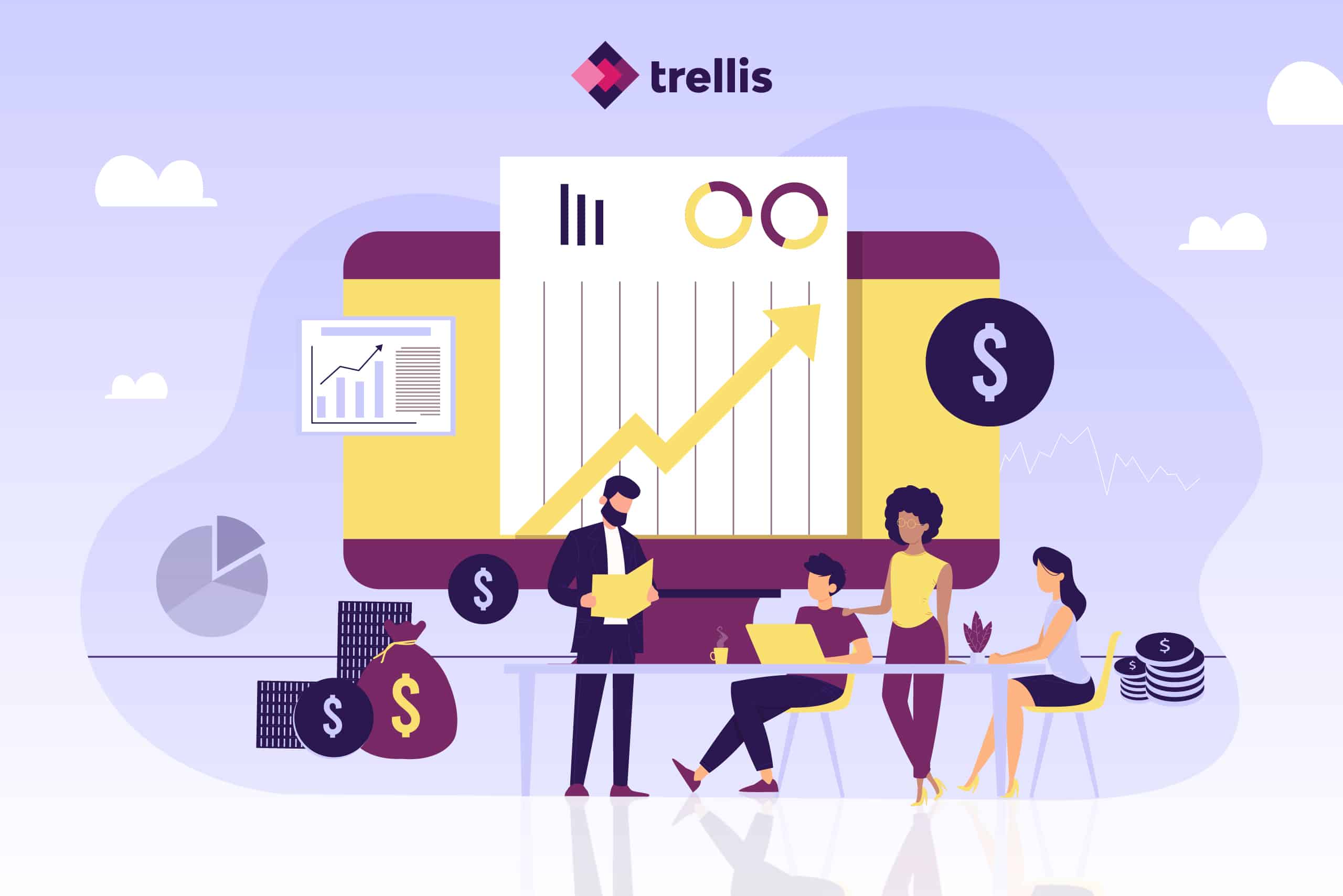The world of online marketplaces is, to put it mildly, more dynamic than traditional retail. If you feel like things are moving at the speed of light, it’s because they are. Every day, it’s becoming more challenging — and expensive — to compete.
One of the biggest challenges is pricing. Decisions about when to increase or decrease your prices, and by how much, are extremely complex. From driving sales to reducing ad costs, there’s a number of factors that can influence your pricing strategy — especially for brands with multiple product lines.
By proactively documenting and standardizing your pricing processes, you can take the guesswork out of your day-to-day decision making and keep prices optimized across the product portfolio.
Is your pricing optimized for demand on Amazon? Find out with our free Amazon price elasticity of demand calculator.
Why Now is the Time to Dial in Your Pricing
Modern commerce is only getting more competitive and complex. As the adage goes, “The best time to plant a tree was 20 years ago. The second best time is now.” Let’s just say that now is the second best time to standardize your pricing.
Today’s consumers are price conscious: 43% of shoppers reported that higher prices have caused them to shop online less frequently. If you’re like the many sellers searching for that sweet spot, you probably adjust your pricing for any number of reasons on a given day, including:
- Increasing sales
- Protecting margins
- Minimizing ad costs
- Avoiding stockouts
- Clearing overstocked inventory
Pricing is complex and making these adjustments is often time sensitive. With multiple team members making their own siloed decisions, it’s nearly impossible to keep everyone on the same page about how to know when the price is right.
As Trellis Chief Evangelist Ali Babul and VP Data Science Denis Leclair discuss in our recent session on Amazon Pricing Strategies to Drive Profits: pricing impacts all core business KPIs. “To one extent or another, [price] is going to affect all of these parameters,” explains Denis. These include:
- Advertising cost of sales (ACoS)
- Click-through rate (CTR)
- Conversion rate (CR)
- Inventory turnover
- Volume
- Sales
- Profit
- Profit per session (pPS)
For sellers looking to grow profits with a dynamic pricing strategy, mapping out the pricing landscape is key to keeping it profitable. Take the time to gather data and gain a deeper understanding of the market, and watch your profits soar.
5 Ways to Streamline Your Pricing Decisions
If you’re ready to stop “playing it by ear” with pricing, here are some key steps to help you start documenting your processes and driving profitable results in the process.
1. Know Your Options
What does it mean to standardize your pricing strategy? In a nutshell, it’s about creating a consistent, data-driven approach to setting prices across your product portfolio.
Streamlining your pricing doesn’t necessarily mean using the same pricing strategy for every product on every channel. There are many different pricing methods to suit every product and retail scenario. Here are a few of the most common:
- Cost-plus pricing. With this straightforward method, you add a fixed percentage markup to your product cost. It can work in some scenarios, but often doesn’t account for market dynamics.
- Rule-based pricing. With this approach, you can set specific rules for price adjustments based on predefined conditions like time of day, seasonality, or stock levels.
- Dynamic pricing. This strategy uses AI to adjust prices in real time based on factors like demand, competitor pricing, and inventory levels.
- Value-based pricing. This method prices products based on their perceived value. It’s less tangible than the other approaches, but can work if you really know your market.
Which method should you use? Most sellers base this decision on factors such as product type, market demand, and competition. For example, when introducing a new product, you might start with a cost-plus approach to ensure profitability while you gather data. When you have a feel for the market, you can then switch to rule-based or dynamic pricing.
The best approaches are rooted in data, aligned with your goals, and regularly adjusted based on performance. Standardization means more flexibility, not less. It’s about creating a documented framework that can adapt to changing market conditions as needed to keep your business profitable as you scale.
2. Understand Your Price Elasticity
Each of your products does have a correct price — that is, the price that nets you the most sales and profit. The problem is, that price is changing all the time.
“There’s an average of 2.5 million price changes per day on Amazon,” remarks Ali. “Brands have already figured this out. So, what do they know?”
One of the ingredients in the “secret sauce” is price elasticity. Price Elasticity of Demand (PED) is the percentage change in demand over the percentage change in price.
PED = % change in demand / % change in price
PED helps you see what a product’s demand was at a certain price, say $20, compared to what demand was when the price was $25. If demand plummets disproportionately when the price hits a certain point, that’s actionable information.
For example, let’s say that when you increase your price from $20 to $25, demand falls from 100 units to 80 units. Your PED would be:
PED = -20% / 25% = -0.8
A PED with an absolute value less than one usually indicates that your product is fairly inelastic — demand doesn’t swing up and down as far as price. Lower elasticity often means you can increase prices without significantly impacting sales volume.
Watch the video below and get the complete primer on Amazon Pricing Strategies to Drive Profits.
3. Measure Your Profit Sensitivity
Elasticity tells you how demand changes with price. Profit Sensitivity (PS), on the other hand, shows how changes in price impact your bottom line. It’s calculated as the percentage change in profit over the percentage change in price.
PS = % change in profit / % change in price
Let’s continue with our previous example. If your profit was $500 when price was $20, and then it increased to $600 when the price was $25, your PS would be:
PS = 20% / 25% = 0.8
A PS closer to one indicates that your product has higher profit sensitivity, since the change in profit is close to the change in price. A higher PS means that price increases can lead to higher profits — but it can also be a yellow flag that price changes carry higher risk. ⚠️
At the intersection of PED and PS lies your optimal price. That is, the price at which you get peak profit and volume. Your best pricing range hovers around this optimal price and should be included in your documented pricing strategy.
Of course, few products will have a static optimal price. Pricing curves flex and evolve — it’s the nature of online marketplaces. However, you can still standardize your pricing processes based on optimal ranges while staying adaptable.
4. Document Your Processes
As your brand grows, so does the complexity of your retail operations. Fast-growing sellers usually haven’t had the time to evolve their processes to be as efficient and profitable as possible. This is especially true for pricing strategies in fast-paced marketplaces like Amazon.
Documentation isn’t the sexiest part of eCommerce, but it’s crucial for long-term success. Standardized pricing ensures consistency across products, sets you up to scale, and empowers you to iterate on your learnings over time.
Your pricing documentation should include:
- Detailed explanations of your pricing strategies for different channels and product categories
- Step-by-step guidelines for making adjustments
- Target ranges for tracked KPIs and pricing goals
- Flowcharts for handling various pricing scenarios
- Roles and responsibilities of team members involved in pricing decisions
Each brand owner will have unique strategies and goals for each product. Your documentation can reflect these nuances while maintaining a cohesive strategy that keeps everyone on the same page.
5. Strike a Balance Between Manual and Dynamic Pricing
Even with detailed documentation, making manual price adjustments multiple times a day can lead to missed opportunities and reduced profitability. That’s where dynamic pricing can help, but only if you use the right approach.
Dynamic pricing tools can help you map out the “pricing landscape” of your products. Some product categories are much more responsive to changes in price — they have a higher PED. To understand this dynamic, pricing tools develop demand models that learn, over time, how a price change will impact sales.
You can also incorporate other factors like landing costs, cost of goods, and operating expenses to land on a price that balances demand with profit.
However, AI and automation can never replace human oversight. Most brands find that the best pricing approach combines the efficiency of dynamic pricing with the nuance and strategic insight of manual pricing.
Automate and Streamline Your Pricing Decisions for Profitable Growth
A data-driven pricing strategy is essential for eCommerce brands looking to reach the next level of growth. You can get there by understanding different pricing strategies, analyzing metrics like price elasticity and profit sensitivity, and striking a balance between manual adjustments and automation.Trellis’s Dynamic Pricing tool helps sellers of all sizes stay ahead of the curve by setting the right prices every day. To see how, request a demo today.



